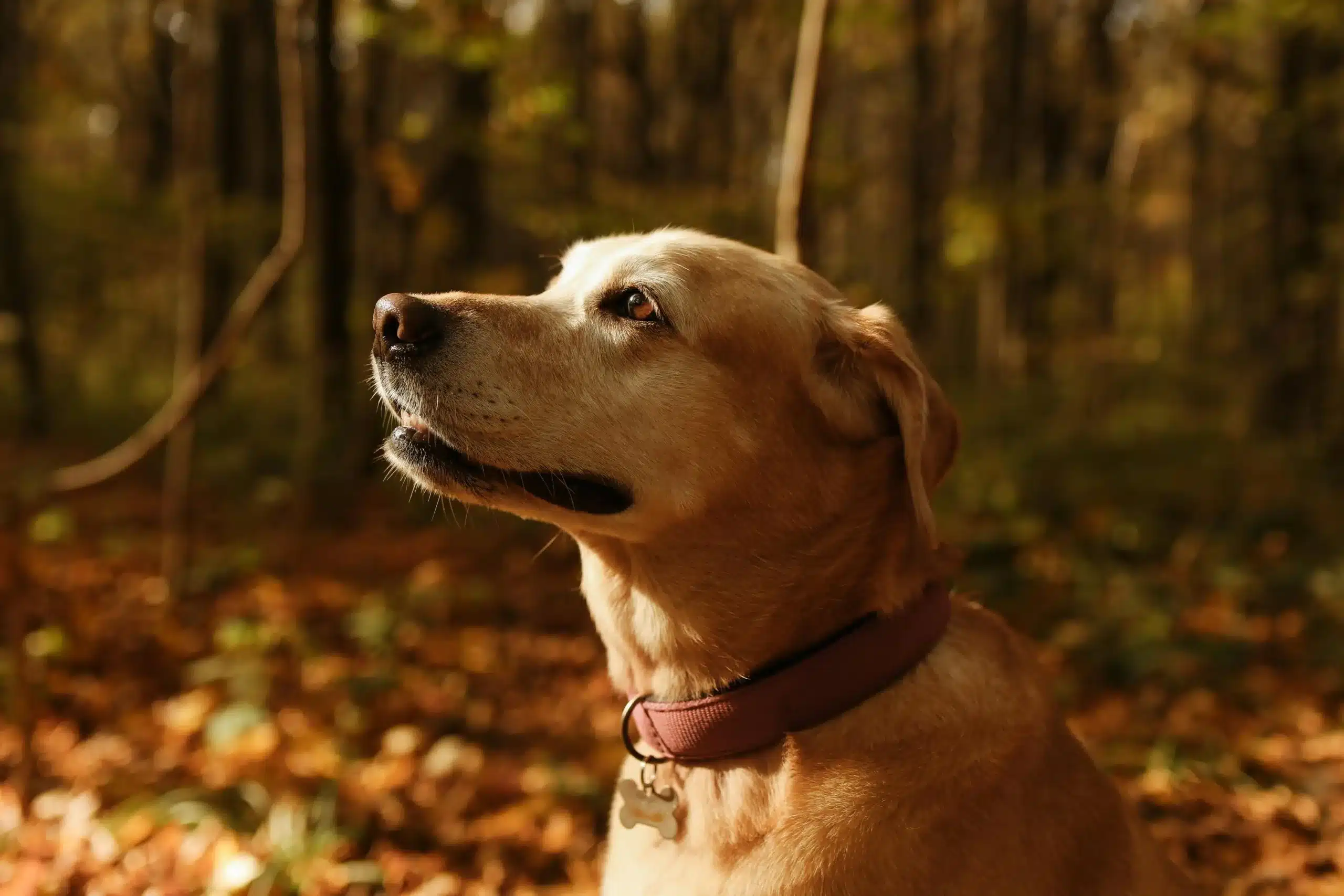Fall has officially arrived. The weather is beginning to change in most of the country, and when the weather changes, so does your dog’s coat!
Dogs prepare for cooler weather by shedding their summer coat and growing a thicker, fluffier coat of fur. This helps keep them warm in cold weather. Dogs’ winter coats require different grooming needs than thinner summer fur, however.
Why do Dogs Shed in the Fall?
Dogs have two big shedding seasons. In the spring, around March or April, they shed their winter coat and exchange it for a lighter coat of fur in preparation for the hot summer months. In the fall, around September, they start shedding their summer coat and grow a thicker, warmer coat for the coming winter months of cold.

A dog’s fur coat is vital to its physical health. Fur protects dogs’ skin from the sun in summer, and helps keep it warm in the winter. It also helps regulate a dog’s body temperature, which is why the fur gets lighter in the summer and thicker in the winter.
How much your dog will shed depends on their:
- Breed (single-coated dogs shed less, and some hairless breeds shed very little)
- Health (some skin issues and disorders can cause extreme shedding at other times in the year)
- Current season and where they live
Not all dogs shed equally in the fall, though most breeds will grow a thicker coat for the winter. If in doubt, research your dog’s breed and consult with your vet in order to meet your pup’s fall grooming needs.
How Do You Prepare Your Dog for Fall?
If you’ve spent a lot of time outdoors during the summer, your dog’s grooming needs may include:
Paw Care
Your dog’s paws can get sore, chapped, or cracked from walking on hot pavement or sand all summer. Before they go out into snow-covered drifts, soothe their paws with paw balm, moisturizer, or petroleum jelly. If your pup’s paws are cut or cracked, they may need an antibiotic ointment as well.
Skin Issues
Your dog has spent all summer running around with the insects. In addition to insect bites, their skin may suffer from seasonal allergies. Pollen, weeds, and other environmental changes of summer may cause rashes and itchiness on your dog’s skin.
Some hot spots or sores may require medical treatment. With minor skin conditions, your pup will gain relief from weekly hypoallergenic shampoo baths and regular grooming.
Coat Care

Regular grooming is the best way to keep your dog’s coat healthy and prepared for each season. However, some dogs may have their coat damaged from the sun, just like when something is bleached.
A major grooming session with shedding blades, color shampoo, and an oil-based coat conditioner or coat spray will help your dog’s coat shine with a healthy gleen again.
Even if your pup stayed indoors most of the summer and didn’t suffer from allergies, insects, or sun damage, you should help your dog prepare for the fall by grooming more frequently until the last of their summer coat has shedded.
How Can I Manage My Dog’s Shedding?
Spring and fall shedding can leave fur all over the house, including on the furniture and your clothes. Your dog’s needs and your house’s needs are different. You can manage the fur around the house by:
- Vacuuming more frequently
- Dusting and mopping often
- Keeping a sticky roller nearby (and in the car) for furniture and clothes
- Washing pet bedding frequently
- Using furniture slipcovers and washing frequently
- Using a HEPA air filter to capture flying fur and dander
You can help manage your dog’s needs by:
- Frequent grooming and using different brushes to help with shedding
- Frequent baths
- Keeping your dog hydrated and on a healthy diet (this strengthens hair follicles)
- Taking your dog to a professional groomer (they have better grooming tools to help with shedding)
By preparing in advance for seasonal fur changes, you can keep yourself, your house, and your dog more fur-free!
How Do I Manage My Dog’s Thicker Winter Coat?

Now that you know some tips for managing your pup’s shedding, what about when the thicker coat grows in? Your dog needs its thick coat to protect it from the winter cold. Thicker fur in cold weather has different grooming needs than a thin fur coat on a dog.
Bathing
You should bathe your pup less frequently in the cooler months. Once every 4-6 weeks is enough to maintain cleanliness unless your dog rolls around in a mud puddle or meets a skunk. More often than that will cause your dog’s skin to dry out. It also helps your dog’s skin to use moisturizing shampoos and conditioners when bathing.
Grooming
You’ll want to brush your dog’s thicker fur more frequently, 2-3 times a week or more, in the cooler weather. Frequent brushing prevents the thicker fur from matting, helps distribute natural oils to soothe your dog’s skin, and gets any debris out of the thicker fur.
Nutrition
Even your dog’s nutritional needs will change in the winter. Ensuring your pup gets additional protein, Omega-3s and Omega-6 fatty acids will help keep its coat healthy and shiny in the winter. Supplements like flaxseed oil or fish oil and keeping humidity constant in the house will all help with your dog’s hydration, which in turn will maintain a healthy coat.
Final Thoughts

Just like your dog’s grooming needs change with the season, remember that paw care, skin care, and nutritional needs will also change. By applying all these fall grooming tips, you can keep your house, and yourself, comparatively fur-free for the cooler weather.
Also, your pup’s coat will be shining with health, and your pup will feel happy and energetic, just in time to enjoy all the fun fall festivities!




















